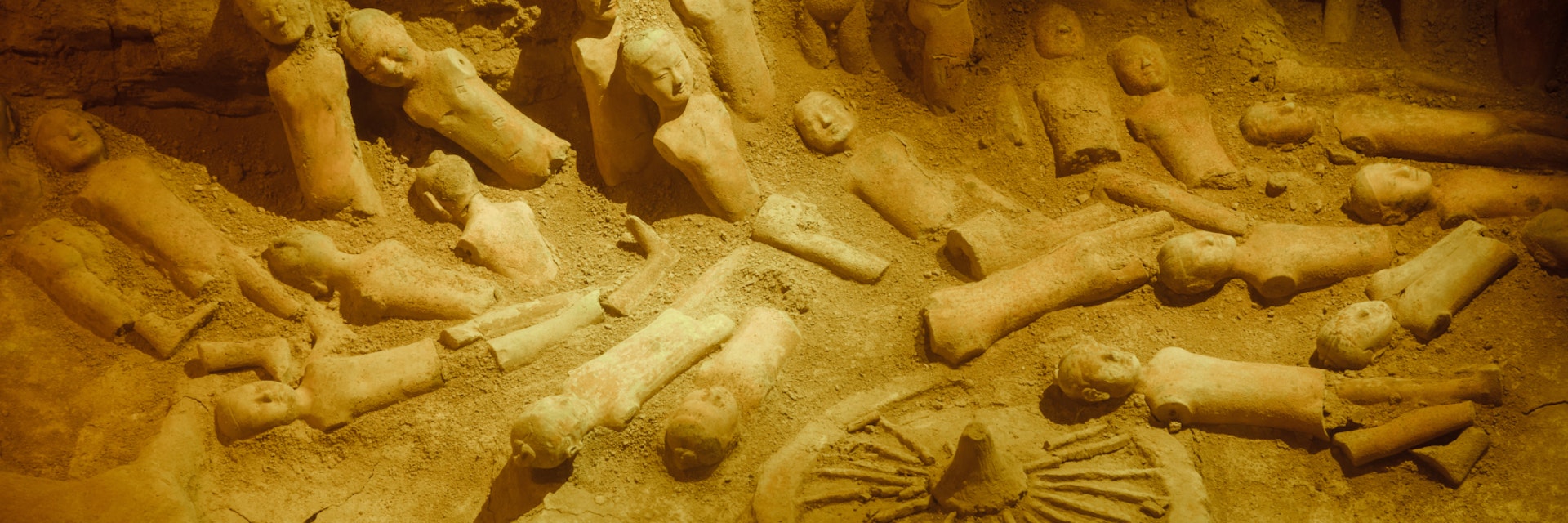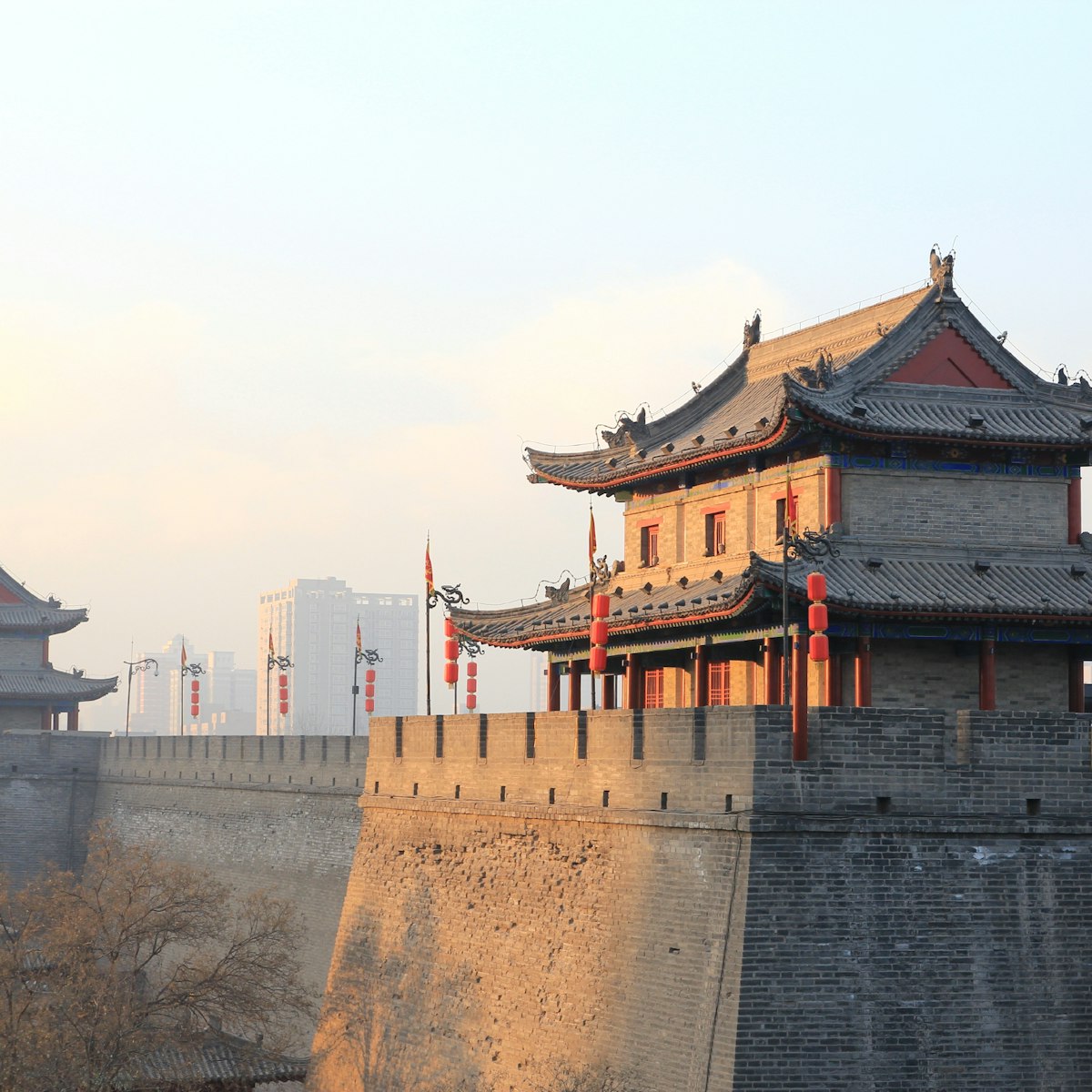This tomb, also referred to as the Han Jing Mausoleum, Liu Qi Mausoleum and Yangling Mausoleum, is the burial place of the Han-dynasty emperor Jingdi (188–141 BC) and is quite possibly Xi'an’s most underrated highlight. If you only have time for two sights outside Xi'an, make it the Army of Terracotta Warriors and this impressive museum and tomb. Unlike the warriors, though, it's not inundated with visitors so you'll have elbow room to fully appreciate what you’re seeing.
Much influenced by Taoist precepts, Emperor Jingdi based his rule upon the concept of wúwéi (无为, nonaction or noninterference) and did much to improve the life of his subjects: he lowered taxes greatly, used diplomacy to cut back on unnecessary military expeditions and even ameliorated punishments meted out to criminals. The contents of his tomb are particularly interesting, as they reveal more about daily life than martial preoccupations – a total contrast with the Terracotta Army.
The site has been divided into two sections: the museum and the tomb's excavation area. The museum holds a large display of expressive terracotta figurines (more than 50,000 were buried here), including eunuchs, servants, domesticated animals and even female cavalry on horseback. The figurines originally had movable wooden arms (now gone) and were dressed in colourful silk robes.
Inside the tomb are 21 narrow pits, some of which have been covered by a glass floor, allowing you to walk over the top of ongoing excavations and get a great view of the relics. In all 81 burial pits are believed to be here.
To get here, take Xi'an metro Line 2 to Shitushuguan station. Outside exit D take bus 4 (¥1) to the tomb, which leaves at 8.30am, 9.30am, 10.30am, noon, 1.30pm, 3pm, 4pm and 5pm, returning to the Xi'an metro station at 9am, noon, 4pm and 5pm.
Alternatively, tours (around ¥160 per person) are usually arranged by guesthouses. The tomb is 20 minutes from the airport, so makes an easy stop-off by taxi.








